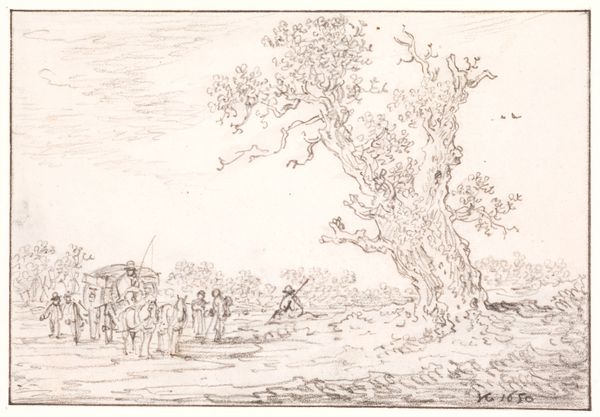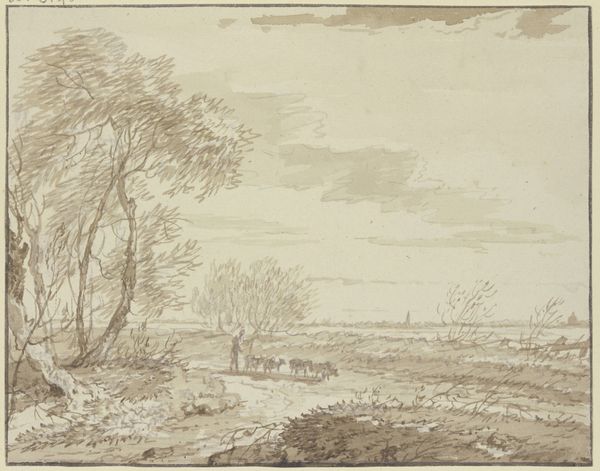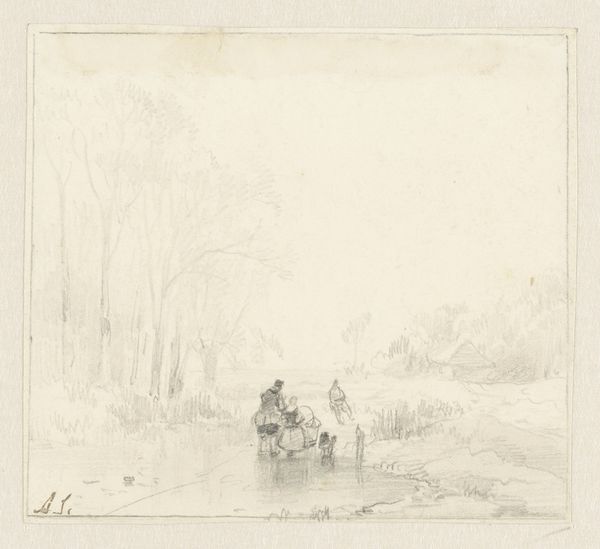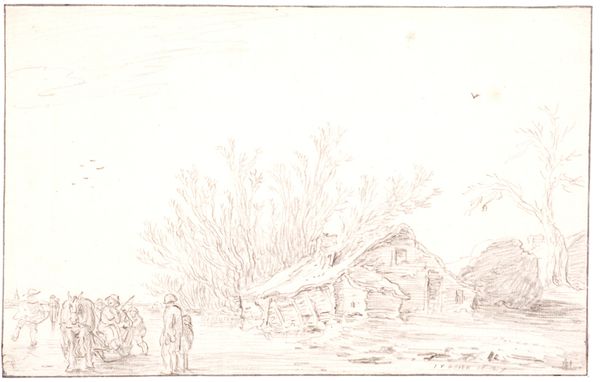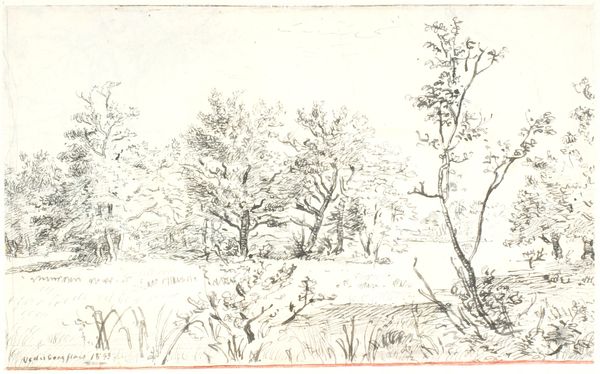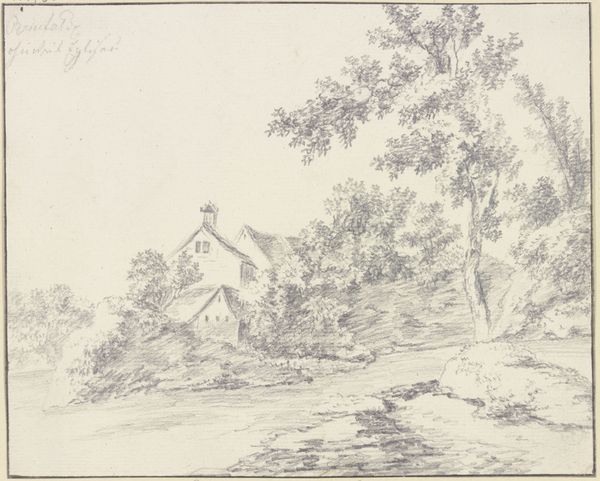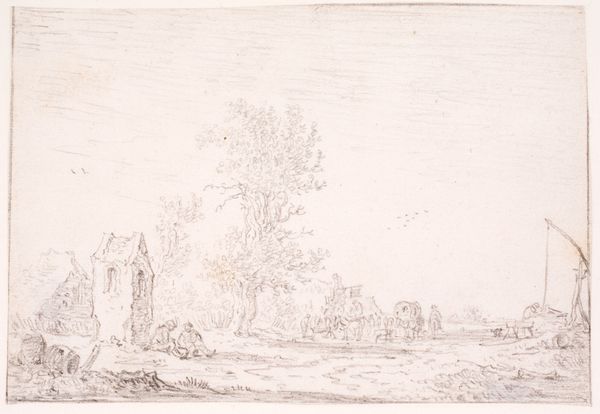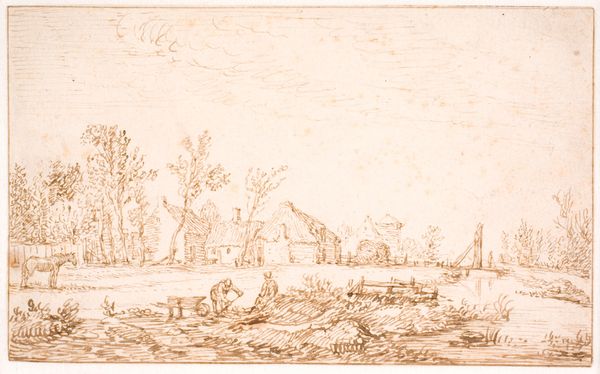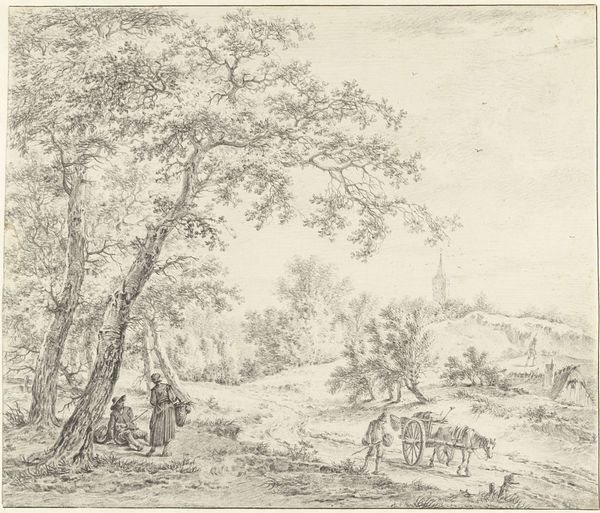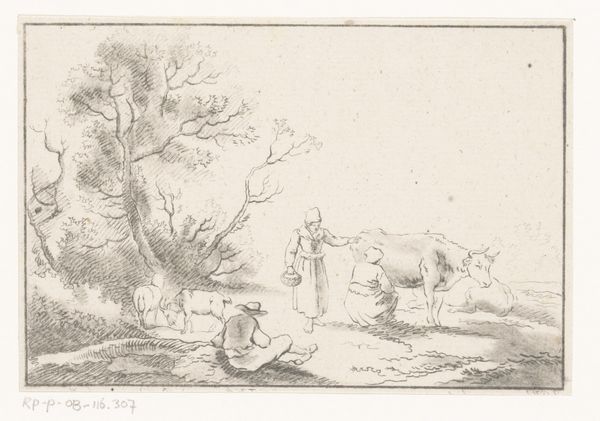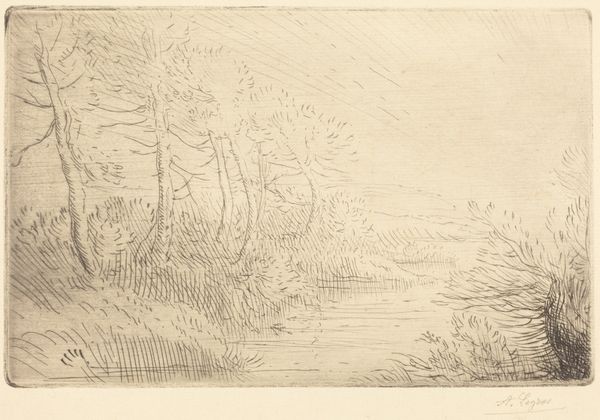
drawing, etching, pencil
#
drawing
#
dutch-golden-age
#
etching
#
pencil sketch
#
landscape
#
etching
#
pencil
#
genre-painting
#
realism
Dimensions: 160 mm (height) x 255 mm (width) (bladmaal)
Curator: We're looking at "Landscape with a Road Along a River", a 1627 drawing by Jan van Goyen currently held at the SMK, the National Gallery of Denmark. The medium appears to be etching, or perhaps pencil and ink? Editor: It’s incredibly pale. Almost ethereal, isn’t it? Barely there… the quiet scene almost feels like a dream, and those figures so small and frail. It's delicate, on the verge of fading away like memory. Curator: Yes, the subdued tones are striking. The landscape genre became a booming industry in the Dutch Golden Age. What I see is that Van Goyen skillfully exploited the readily available, and affordable, materials such as paper, etching tools, and common pencils, rendering mass-produced works for a bourgeoning middle class hungry for depictions of familiar, local scenery. Editor: That commodification is significant, absolutely, especially when we consider land ownership during this period. Who had access to land, who was displaced, whose labor actually built these idyllic settings? How does the burgeoning merchant class affect traditional rural communities, and their sense of place? That placid river likely serves commercial ends; not just aesthetic beauty. Curator: And those two tiny figures walking away from us? Probably lower class rural folks—they're barely rendered at all. Van Goyen's etching skill captures atmospheric depth with minimal strokes—he could make these relatively quickly. Editor: The absence of detail says something. The laboring class almost dissolves into the landscape…rendered anonymous against the looming Dutch landscape. The church spire hints at larger religious powers also shaping their lives. This "realistic" scene masks power dynamics. Curator: And yet, that mass-produced nature afforded the common buyer a personal, emotional connection with their locale. It fostered identity, however complexly formed. Editor: Perhaps. Art, however, must always be understood through the intricate webs of class, economy and history. This idyllic vision often veils the struggles underpinning it. The material conditions reflect cultural values, yes? But often values of only the dominant class. Curator: Absolutely. The material is never neutral, it reveals social values—what’s deemed worthy to be produced, and by whom. Editor: Exactly, and with Van Goyen, these delicate, almost whispered landscapes can tell more potent stories of power, class, and labour than one initially anticipates.
Comments
No comments
Be the first to comment and join the conversation on the ultimate creative platform.

